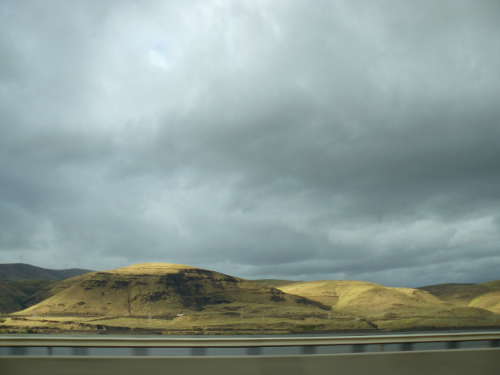 Location Taken: Eastern Washington
Location Taken: Eastern Washington
Time Taken: June 2010
It’s amazing how land this rugged and hilly can still look, well, flat. Or at least it did to me, on first glance.
I suspect it’s because the line where land meets sky is actually pretty straight. No matter how clear the hills are in the picture, if they form a rectangle on the image, I’m going to think flat.
Although, given this terrain and how it formed, it’s not too odd of a leap.
This section of rock used to be quite flat. About, oh, 10-15 million years ago, this land was flooded with lava. I mean that quite literally, some not-fully understood mechanism (but most likely related to the Yellowstone volcano), large amounts of lava flowed across this region in successive bursts, eventually covering the area with a succession of layers of basalt, some a full kilometer thick. It’s eroded down now, but the lava flowed smooth and fast enough to leave a flat surface across the land.
And this was not a small feature, either. The Columbia River Basalt Group covers some 63,000 square miles of land in eastern Washington and Oregon. That’s not too much smaller than the entirety of Ireland.
These features ARE called Large Igneous Provinces for a reason, after all. And yes, there’s more than just this one. And as size goes, this one’s quite small. The largest one found, the Central Atlantic magmatic province, was formed by Pangaea splitting apart to form the Atlantic ocean, and is, oh, about 68 times the size of the one in this photo, covering an area half the size of the USA.
At least they’re quite rare. The Columbia River one is the newest one, after all. It’s a large part of why we’re not sure how they form, since our species has never even come close to one. Which is just as well, really. These mega-eruptions have a slight tendency to potentially cause major extinction events, after all. The Central Atlantic magmatic province, for instance, seems to have maybe just wiped out 50% of the species at the end of the Triassic era. Which did pave the way for dinosaurs to take over for a while, at least, to the joy of many a kid.
